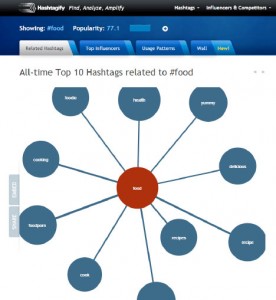The world of investing can be intimidating for the uninitiated. There are so many things to learn: trading windows, stocks vs. bonds, ETFs, and account management fees, to name a few.
With so much to figure out, where should a beginner start?
The good news is that investing is becoming simpler and more affordable as technology develops. Between the wealth of information available on the internet and the intuitive investing tools created by financial companies, beginners have an easy opening into the world of investing.
Getting Started: Investing 101
Before you begin investing, it’s important to take an inventory of your current financial situation and your future financial goals. Seeing the difference between where you are and where you’d like to be is the first step to seeing how investing can improve your financial life.
Why should I invest?
If you’re already in the habit of saving part of your paycheck in a savings account, nice work! You’ve already gotten the hardest part of investing out of the way: learning to pay yourself first. Unfortunately, while the bank might keep your money safe, it isn’t going to grow your money at a meaningful rate.
Although the market had ebbs and flows, long-term investors almost always see much greater returns than they would if they stuck with a basic savings account.
Even the highest interest rates available for online savings accounts can’t keep up with the potential growth available to those who invest. Currently, most online savings account – which historically offer better interest rates than their brick-and-mortar counterparts – offer less than 1% APY. Alternately, the stock market averaged just over 9% growth over the last 30 years.
What do I need to know before I invest?
Beginning investors should have a few things in mind before jumping into investing. These include:
- Why you want to invest. Are you saving for a long-term goal such as retirement, or something shorter term like a wedding or down payment on a home?
- Your timeline. Is retirement 30 years away, or closer to 5? Are you going to need to replace a car in 3 years?
- Your risk tolerance. Risk tolerance refers to how well you can tolerate a loss in the stock market.
- The amount of money you have to invest upfront, and how much you plan to contribute on a weekly or monthly basis.
The good news is many robo-advisors will be able to help you calculate your risk tolerance and chances of achieving your financial goals. More on this later!
5 Tips for the Beginning Investor
We can boil down the easiest ways for beginners to start investing to 5 simple tips. While you can certainly get a professional financial planner involved in your investing journey, you certainly don’t have to; these tips are so easy that even the newest investors can get started.
Educate Yourself
What you don’t want to do is invest your life’s savings on a whim – that’s just a recipe for disaster! Instead, you’re going to want to educate yourself on a few different elements before you start investing.
The major things you’ll want to learn about as you go are:
Different investment options
Many people are familiar with stocks – small shares of ownership in a company that you can purchase for a price that rises as demand grows and falls as stock owners sell off their shares. Stocks are sometimes seen as a higher risk since their value can rise and fall rapidly.
There are also mutual funds, bonds, and exchange-traded funds (ETFs) available to investors.
- Mutual funds include mixed investments that are pre-packaged. These can be great for new investors because they offer diversified investment mixes.
- Bonds come with a lower risk than stocks because they are a loan that an entity – usually the government or a business – agrees to pay back with interest. However, they’re also lower gain; these interest rates are typically a lot lower than the potential gains that can be earned on the stock market.
- ETFs are similar to stocks and mutual funds. They can consist of a single investment or a mix of investments, typically have lower purchase prices than larger mutual funds, and are available for daily trading like stocks.
Up-and-coming companies and industries
Can you imagine having invested when Amazon first offered stocks to the public? What a great choice for those initial investors! Part of your investment education should include looking into developments in various fields and companies to see who is promising immense growth over the next few years.
Of course, you’ll want to be careful; if something seems too good to be true, it probably is.
Account management options
Investing doesn’t have to be expensive – but it can be. As you’re learning about investing, you’ll want to research the different account management options out there. Maybe you feel more comfortable investing with a financial professional at your bank; maybe you’re more of a DIY investor, ready to take on portfolio management yourself.
If you feel torn, don’t worry – there are a lot of middle-ground options, including robo-advisors that offer both actively and passively managed portfolios, which gives you a lot of flexibility in managing your investments.
Look for Opportunities Through Work
Your 9-5 might be the best place to go if you want to start investing. Many employers offer a 401(k) account, which allows you to make automatic, pre-tax contributions to your retirement. Some employers even match your contributions up to a certain amount!
401(k)s are also able to be transferred or rolled over, so you don’t lose any money if you change employers. You can simply move the money over to your new 401(k) – though you may not be able to invest in the same funds – or roll it over into an IRA if your employer doesn’t offer 401(k)s.
Automated Investing and Saving
If the hardest part about investing is putting aside money every month, you’ll benefit from automated saving tools. These tools help you set aside money right at payday (or another day of your choice) so you can ensure your investments get a prominent place in your budget.
One very easy way to automate your savings is by opening a no-minimum requirement checking or savings account, then set up direct deposits of a certain amount into this account. At a certain point of the month, you can then take all the money you saved and apply it to your investment portfolio.
If you have a retirement account through work, like a 401(k), you can also set up automatic contributions so that you don’t even need to think about it – your paycheck gets to work for you every time you’re paid.
Start Small with a Spare Change App
Another way to automate your investments is to use a spare change app like Acorns. Acorns connects to your debit or credit card, automatically rounds your purchases up to the next dollar amount, and places the “spare change” into an investment portfolio. Your $ 2.50 morning coffee might cost $ 3.00, but you know that $ 0.50 is automatically going toward your future.
One of the biggest benefits of a spare change app is that the round-ups are usually so small that you barely notice them – a quarter here and there makes little difference in the grand scheme of someone’s budget, but can make a large difference to an investment account given enough time and consistency.
Try a Robo-Advisor
If the thought of completely managing your own investments sounds too overwhelming or time-consuming, but you balk at the account management fees charged by financial professionals, you’re in luck: there’s a third option.
Robo-advisors are becoming more commonplace in the investing world, ranging from the large-scale robo-advisor Betterment, which has been around for over a decade, to newer, niche offerings like Ellevest, which tailors its services to female investors.
These robo-advisors are a boon to new and experienced investors alike, as they can do many of the same tasks human financial planners do: assess your risk tolerance, make portfolio recommendations based on your financial goals and timeline, rebalance your portfolio, and more.
Even better, robo-advisors tend to charge only a fraction of the amount human financial planners do for much of the same services. Some, like M1 Finance, even offer $ 0 account management fees.
Wrap Up: You Can Start Investing!
The best time to invest is as soon as possible, but don’t panic if you didn’t start at 18, 28, or even 38. It’s never too late to start helping future you build a solid financial foundation. Investing offers you a chance to grow your money at a greater rate than a traditional savings account, making it the wise choice if you’re saving for something big – retirement is a common motivator, though many investors also save for weddings, homes, and their children’s educations.
Even if you have no investing experience, it’s not hard to get started. The internet abounds with information so that you can educate yourself on the various investment types, account management options, and industries out there.
A bit of intentional automated savings goes a long way, whether you choose a spare change app for a daily boost to your investments, or a more expansive 401(k) investment on payday. Make sure to use the best portfolio management software, to keep your investments organized.
Finally, many tools are available to help you save money on account management fees and provide support, so you don’t have to invest alone. With so many robo-advisors available, you’re likely to easily find one that matches your budget and level of comfort with DIY investing.
One last tip: avoid paralysis by analysis. Although some education is very important before you begin investing, your finances won’t grow if they never get invested! Rather than trying to find the Perfect Stock, seek out diversified investment options that give you a range of industries or companies as well as investment types to help ensure your portfolio grows over time despite market fluctuations.
Business & Finance Articles on Business 2 Community
(39)






